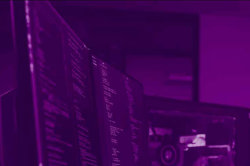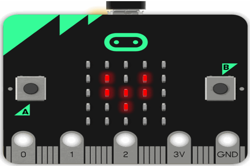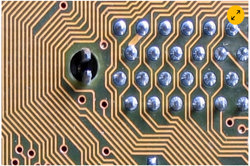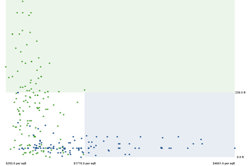A guide to programming languages for coding in class
Associate Professor James Curran, Director of the Australian Computing Academy and co-founder of Grok Learning, provides some valuable insights and suggestions.
Additional details
| Year band(s) | 3-4, 5-6, 7-8, 9-10 |
|---|---|
| Content type | Article or research |
| Format | Web page |
| Core and overarching concepts | Implementation (programming), Impact and interactions |
| Australian Curriculum Digital Technologies code(s) |
AC9TDI4P04
Implement simple algorithms as visual programs involving control structures and input
AC9TDI4P02
Follow and describe algorithms involving sequencing, comparison operators (branching) and iteration
AC9TDI6P02
Design algorithms involving multiple alternatives (branching) and iteration
AC9TDI6P05
Implement algorithms as visual programs involving control structures, variables and input
AC9TDI8P05
Design algorithms involving nested control structures and represent them using flowcharts and pseudocode
AC9TDI8P06
Trace algorithms to predict output for a given input and to identify errors
AC9TDI8P09
Implement, modify and debug programs involving control structures and functions in a general-purpose programming language
AC9TDI10P05
Design algorithms involving logical operators and represent them as flowcharts and pseudocode
AC9TDI10P09
Implement, modify and debug modular programs, applying selected algorithms and data structures, including in an object-oriented programming language |
| Keywords | Coding, programming, Visual programming, Text-based programming, code, Scratch, James Curran |
| Organisation | Australian Council for Educational Research — ACER |
| Copyright | 2017 Australian Council for Educational Research - ACER |
Related resources
-

Computational thinking
This comprehensive online guide, provides a background to computational thinking which refers to the skills and approaches used in computing, programming, and digital solutions to analyse problems and determine how to solve them.
-

Object-oriented programming (OOP)
This comprehensive online guide, explores ways the OOP method of programming (or paradigm) is different to the procedural paradigm, which many programmers start out with on their learning journey. This topic introduces objects and how they can be defined and worked with in a computer system.
-

Program design
This comprehensive online guide, explores ways specific algorithms are designed for large applications, considering data and user interface. Learn how algorithms can be expressed as a flowchart and pseudocode, and validated and verified.
-

Emulating nature's perfect pursuit
A case study briefly describing an AI project where scientists have adapted dragonflies’ neuronal processes into a unique algorithm that emulates the insect’s phenomenal visual tracking capability.
-

The Micro:bit Matters
In this article, Gary Stager introduces and explains the BBC micro:bit. He discusses pros and cons of the device, prices, compatible programs to use with it, resources to help understand the Micro:bit and other technological devices on the market.
-

10 Reasons to Teach Coding – #Sketchnote by @sylviaduckworth
Here are 10 reasons to teach coding presented visually using Sketchnote.
-

Kids should code: why 'computational thinking' needs to be taught in schools
This article provides a rationale as to why students should be taught 'computational thinking'.
-

A Visual Introduction to Machine Learning
This site explains how 'machine learning' is used to make highly accurate predictions using interactive visualisations.
